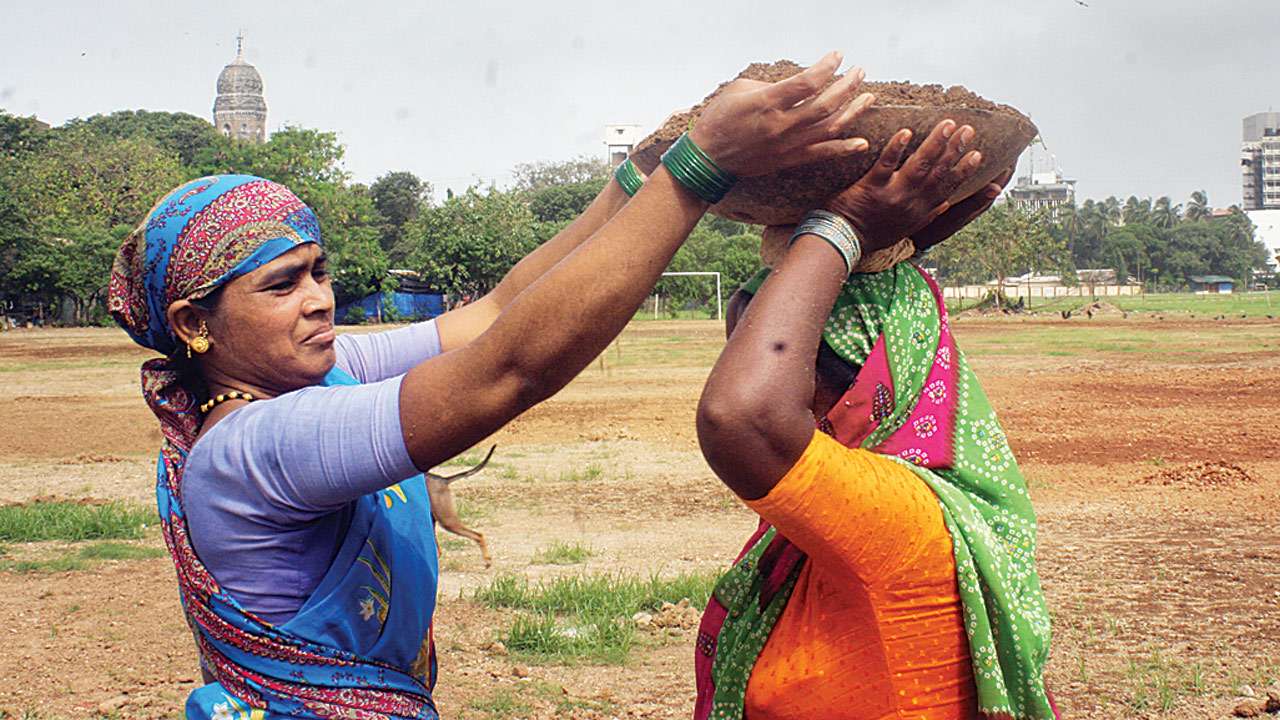
The Niti Aayog’s report titled ‘Strategy for New India @75’ attempts to address gender issues with particular attention to the low female labour participation (FLP). The FLP is currently pegged at 23.7 per cent with a higher decline in rural areas from 49.7 per cent in 2004-05 to 26.7 per cent in 2015-16. The report sets the objectives to create an enabling environment and achieve an FLP rate of 30 per cent by 2022-23.
The report acknowledges several barriers like lack of maternity benefits, crèche facilities, women’s safety and the enormous unpaid work that women undertake. Beyond important but obvious aspects of legal, financial and welfare measures, the report falls short of thinking out-of-the-box. More importantly, the report does not attempt to address the interesting conundrum of – why is it that an increase in women’s education in India is not necessarily leading to an increase in women’s employment? And why is women’s labour force participation rate declining in rural areas? In the absence of nationally representative primary studies that particularly address these ‘why’ questions, attempts have to be made to collage from existing evidence to develop a roadmap.
The current economic growth model with an emphasis on global ease of doing business produces aspirations of people for a better life but simultaneously reinforces precarity of livelihoods across all classes. Across the board, all class groups place enormous emphasis on children’s education.
Women’s participation in full-time employment is seen as antithetical to achieve this aspiration. Mothers and fathers fall into the Talcott Parsonian roles of playing the ‘expressive’ and the ‘instrumental’ roles, respectively. Mothers are preoccupied in shaping the future of their children while fathers battle the big bad world of an uncertain, insecure, contractual, ageist, sexist, long commute, long hours paradigm in the private and corporate world. These competitive coveted sectors are not regulated for work-life balance.
At the bottom of the pyramid, women are not employed but are overworked. It is important to understand how does non-monetised work (unpaid work and unpaid care work) impact on women’s time poverty and lack of leisure. Urban services and school timings are organised which by default expect the availability of a person full time. Water supply in villages, towns and cities, which is not only inadequate but also erratic, keeps several women and girls away from work and education. Government and private school timings with no aftercare arrangements and safe bus transport leave many more women spending time dropping and reaching children to school. Women’s time towards schooling of children is a huge unaccounted human resource, an area that needs to be looked into for creative solutions.
A UNDP study observed that 67 per cent of rural girls and 68.3 per cent of urban girls who have attained graduate level education are not part of the labour force. The study reiterates the persistent cultural conditioning by families of girls to prioritise marriage, family and domestic chores. Hence attempts to increase women’s labour force participation need to build a new cultural narrative of young educated independent working women as national pride. Married women’s choice to participate in the labour force is mediated by their childcare commitments. Women tend to crowd into low-paid, low-skilled, unorganised informal sector occupations; or take up home-based piecework or dropout from better-paid work and look for ‘flexible’ arrangements when they become mothers or resort to poor quality childcare arrangements which compromise the growth and development of their children. The absence of public provisioning of quality childcare arrangements in rural and urban areas and the absence of regulation of informal crèche facilities compromises women’s and children’s rights. There is a dire need to announce a National Creche policy and build budgets to set up services and regulate the existing ones.
Women tend to opt out of taking up jobs if the commute time is long or the costs of commuting are high. Hence there is a need to focus on safe, sustainable public transportation with gender sensitivity and pedestrian-friendly cities that will be enabling for women, children, elderly and people with disabilities to increase women’s employment and public participation.
Much needs to be done by the government to look at sectoral, regional, geographical and class solutions to address gender and specifically the declining women’s labour force participation in India.
Author is a Professor with TISS, Mumbai